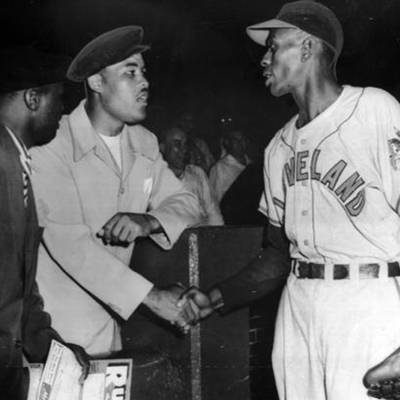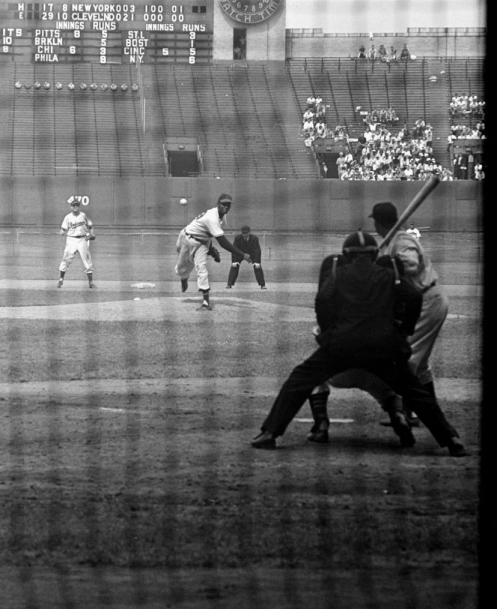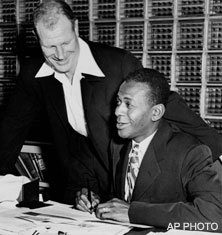 Last Winter, a fellow Tribe fan was offering ideas for history articles.
Last Winter, a fellow Tribe fan was offering ideas for history articles.
“What about Ten Cent Beer Night?” I replied that well, it’s a pretty depressing story. I take this writing-about-the-Indians thing seriously, but it is for fun. I can’t imagine spending any more time than I already have in pondering such idiocy on the part of the Tribe front office and the fans who attended that game. And the visual of then-Ranger Mike Hargrove fist-fighting his way through Clevelanders to his dugout nauseates me. So, nah- you won’t find further development of that subject in this corner.
Same goes for other upsetting subjects, such as Little Lake Nellie. Ray Chapman, Tony Horton and Jimmy Piersall, too. At least, as central topics.
“Well, what about featuring Mel Harder?” Oh, yeah- I’m on board with a guy like that. There weren’t many figures whose lives were as interwoven with the Indians franchise as he. But that‘s the issue. With an article of typical length, it would be a challenge to portray Harder’s career- and his significance to the Indians- without just jamming it with so many facts that it would read like a Wikipedia piece.
And there it is. If an article sounds like something Tribe fans can easily Google, then what’s the point in writing about it? Monotone: “Mel Harder was born on October 15, 1909, in Beemer, Nebraska. He graduated from Tech High School in North Omaha, Nebraska.”
Another factor in not featuring many Hall of Fame-caliber figures: their bios have already been written (and read) by armies of writers and readers. What can I provide here that you have not heard about Bob Feller? Admittedly, a fresh piece can be written based on interviews with experts and contemporaries. Or, with a book review.
Another solution: rather than structuring a piece around the biography of a player and then fitting some stories around it, it seems a lot more interesting to try featuring some interesting stories and sliding the player into them. In this manner, particular facets of a player can be featured. The fear of biting off more than can be chewed might be allayed.
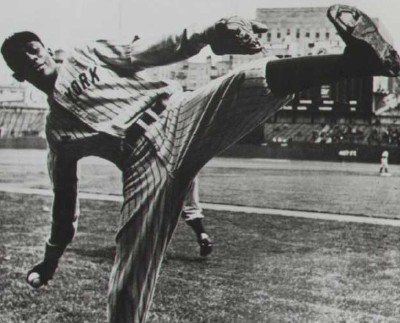 Then there is the rare case of a player like Satchel Paige. Here’s a guy who’s way bigger than life, a popular pitcher from the Negro leagues who’d eventually have some success in the majors. In his prime, he’d pitched in dozens of exhibitions against major league hitters. They vouched for his status as a premier pitcher of his time.
Then there is the rare case of a player like Satchel Paige. Here’s a guy who’s way bigger than life, a popular pitcher from the Negro leagues who’d eventually have some success in the majors. In his prime, he’d pitched in dozens of exhibitions against major league hitters. They vouched for his status as a premier pitcher of his time.
Internet stories on Paige indeed are prevalent. However, they are likely to depict a caricature rather than attempt to paint a broader picture. Mainly, they can tend to be limited to the famous quotes and the “who knows how old he was?” question. Don‘t get me wrong; the lighthearted, nonsensical quotes are great, and do provide a small window into Paige’s personality.
From the old Collier’s magazine (1953), Paige’s ‘Rules For Staying Young’:
"Avoid fried meats which angry up the blood."
"If your stomach disputes you, lie down and pacify it with cool thoughts."
"Keep the juices flowing by jangling around gently as you move."
"Go very light on the vices, such as carrying on in society—the social ramble ain't restful."
"Avoid running at all times." "And don't look back—something might be gaining on you."
On the subject of Paige’s date of birth, reporters as well as the player himself have milked that subject through the decades. The story is that Paige had so many siblings that his mother wasn’t able to keep track. The truth appears to have been established many years ago: he was born in Mobile, Alabama in 1906.
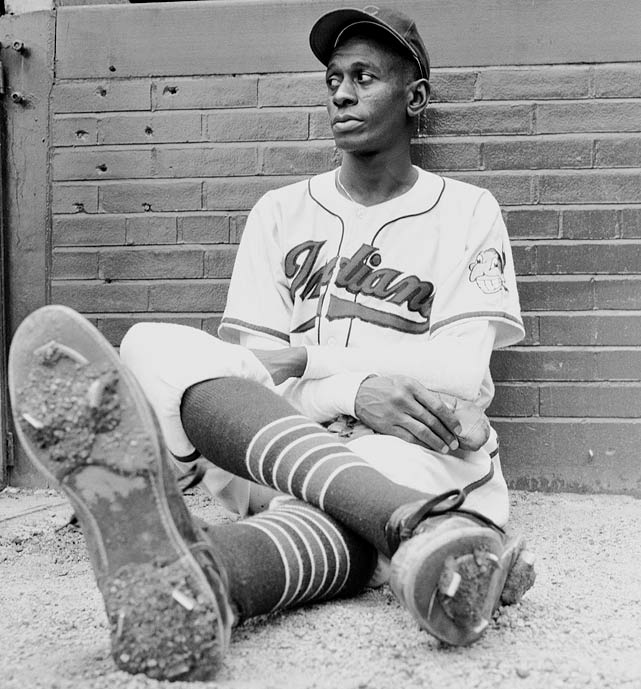 That puts his age at 42 when Satchel Paige was signed away from the Negro leagues by the Cleveland Indians in July of 1948. There is a rich depth and texture to his life, from well before he became a media darling at the end of his career.
That puts his age at 42 when Satchel Paige was signed away from the Negro leagues by the Cleveland Indians in July of 1948. There is a rich depth and texture to his life, from well before he became a media darling at the end of his career.
Tribe owner Bill Veeck had already been a fan of Paige’s from following him in the Negro leagues through the years. So, Paige wasn’t the first black player to play in either of the major leagues; this bothered him since he was the player the country wanted to see. He soon came to understand that it was for the best, as Major League Baseball wanted the first couple black players to start out in the minors. Paige was not interested in that.
The 6’ 3 ½”, 180lb., right handed Paige was by far the biggest draw in Negro league baseball. He was accustomed to years of pitching every game- for three to five innings a day. Hilton Smith (“Satchel Paige’s caddy”) would pitch in relief over several years. Paige had names for the various pitches he threw: the Hurryup Ball, Midnight Creeper, Two Hump Blooper, Be-ball, Looper, Dropper, Nothing Ball, Bat Dodger, Whipsy-dipsy-do… basically, he is said to have thrown a couple different types of fastballs, a forkball, curve, a knuckleball- actually there wasn‘t a pitch he wouldn‘t throw. One of his fastballs either rose as it reached the hitter, or had the illusion of rising (modern parlance may be that it was an ‘exploding’ fastball). The Hesitation Pitch was legendary. According to The Neyer/James Guide to Pitchers, Paige would hesitate up to three times during his windup: while his arms were over his head; before he put his front foot down; after placing his front foot down but before coming forward with his hand.
Paige was a consummate showman, whether he was pitching for his team or for various barnstorming outfits his team owner would rent him to (Paige would get a cut). Early in his career, his teammates loaded the bases with two out in the ninth inning of a 1-0 game, with three errors. Paige was upset, and began kicking dirt around the mound. The crowd booed the pitcher, so he called the outfielders in and had them sit in the infield. His teammates joined the crowd in howling at Paige- who proceeded to strike out the last batter for the win! Paige repeated this stunt at various other times through the years.
Paige played with several different Negro league organizations, including a stint in Cleveland. It was in 1931, during the Great Depression, and teams struggled to stay afloat. Paige’s time with the Cleveland Cubs was short- but long enough for him to “burn” over the fine Indians stadium, League Park.
One of the stops made by Paige was in the Mexican league, which had a significant role in the integration of Baseball. Mexican brewer Jorge Pasquel wanted to compete with the major leagues. He signed top Negro league players, and then turned his attention to white major leaguers who felt they were underpaid. This development helped to hasten the interest of the U.S. major leagues in signing black players as well.
While Paige was said to perhaps pitch up to 100mph, it was his precise control which most observers raved about. He was said to be able to throw pitches over a postage stamp placed on home plate. When player/manager Lou Boudreau of the Indians worked out Paige at the request of Veeck, he handed Boudreau a folded-up handkerchief. According to Russell Schneider’s The Cleveland Indians Encyclopedia, Boudreau related: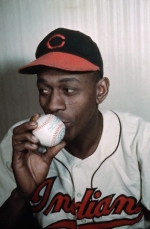 (he) told me to put it on the plate wherever I wanted him to pitch the ball, inside, outside, middle, wherever. First, I put it on the inside corner. He wound up and threw 10 pitches- fastballs and sliders, all with something on them- and nine of them were right over the handkerchief. Then, he told me to move the handkerchief to the other side of the plate, and he threw 10 more pitches the same as before. His fastball had a hop to it, and his slider was tremendous. Seven or eight pitches were right over the handkerchief and those that missed, didn’t miss by much.Next, Veeck wanted me to bat against Paige. I hit some line drives, but not many. I’d seen enough. He was tough, and I was satisfied that he could help us.
(he) told me to put it on the plate wherever I wanted him to pitch the ball, inside, outside, middle, wherever. First, I put it on the inside corner. He wound up and threw 10 pitches- fastballs and sliders, all with something on them- and nine of them were right over the handkerchief. Then, he told me to move the handkerchief to the other side of the plate, and he threw 10 more pitches the same as before. His fastball had a hop to it, and his slider was tremendous. Seven or eight pitches were right over the handkerchief and those that missed, didn’t miss by much.Next, Veeck wanted me to bat against Paige. I hit some line drives, but not many. I’d seen enough. He was tough, and I was satisfied that he could help us.
So Veeck signed the pitcher, and suffered the ire of some baseball experts who decried the move as a publicity stunt. The Sporting News was the biggest detractor, and Veeck eventually had the last laugh: he campaigned on Paige’s behalf for the AL Rookie of the Year award- which was to be bestowed by yes, The Sporting News. Satchel Paige won six games in 1948 and helped the Indians win the pennant. After two seasons with the Indians, Paige was released when Veeck was forced to sell the team due to financial difficulty during a divorce. After sitting out a year, he played a couple more seasons in the majors, mostly with the St. Louis Browns (whose majority owner was Veeck).
Various major leaguers were champions of Satchel Paige: Dizzy Dean, Bob Feller, Joe DiMaggio, Ted Williams, and others. Partly due to Williams’ urging, Satchel Paige became the first black ballplayer to be elected to the baseball Hall of Fame (1971).
So there’s Satchel. No one city can claim him as their own. He was a legend, even during his own lifetime. But he made his mark in Cleveland. He was more than a series of quotes-he was also one of the best pitchers in the history of Baseball.
http://www.youtube.com/watch?v=I3q2TeFuTq8
Thank you for reading. Next week: Blast From The Past: Andre Thornton.
Paige shaking hands with boxing champion Joe Louis, in an era when baseball and boxing ruled U.S. sports.